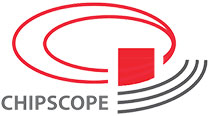CHIPSCOPE
- Details
- Category: EUROPEAN PROJECTS
Overcoming the Limits of Diffraction with Superresolution Lighting on a Chip
Grant agreement 737089 in H2020
ChipScope will revolutionize optical microscopes with superresolution capabilities, making them chip-sized, convenient, affordable and ubiquitously available, not only for laboratories working in manifold research fields, but also in everyday lilfe. During the project, very small LEDs of 50 nm (this is 1000 times smaller than the diameter of a human hair) will be developed and used as light sources for a new microscope which will be integrated on a chip. The fundamental difference with conventional optical microscopy will be that the illumination is made by extremely small individual light sources instead of a wide illumination field and tiny detectors in the camera. This allows super-resolution (<50nm) optical microscopy, which could be used to investigate extremely small structures as viruses, DNA or living cells, in real time.
